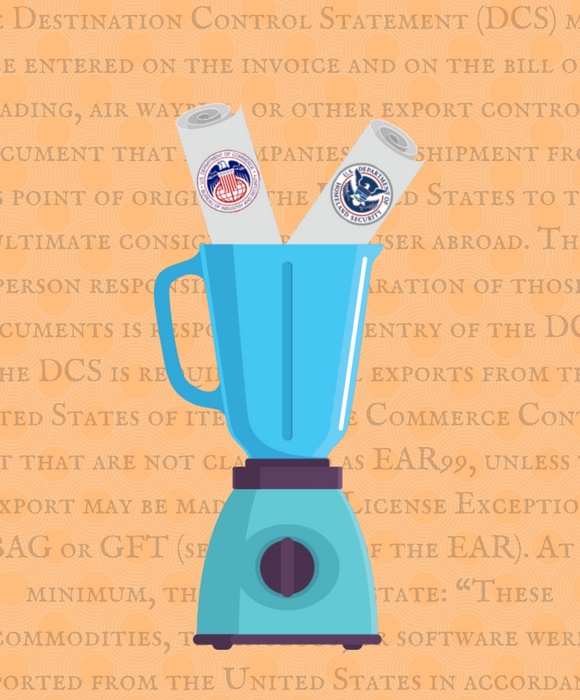
Effective November 15, the Bureau of Industry and Security (BIS) and the U.S. Department of State (DOS) will enforce new requirements for the destination control statements needed under the Export Administration Regulations (EAR) and the International Traffic in Arms Regulations (ITAR). The revisions will combine both destination control statements, used for EAR and ITAR, to make one statement. This will help to alleviate perceived concerns for exporters of non-600 series and non-9×515 ECCNs under the EAR.
Destination Control Statements
Currently under the EAR, exporters are required to include a destination control statement on certain transactional documents, such as commercial invoices, ocean bills of lading, and air waybills, which is similar to the ITAR requirements, with the exception of a few words. The purpose of the destination control statements, for both cases, is to alert that the item is subject to the EAR/ITAR. This means that an item exported to a specific destination, must not deviate from that destination.
The Wording of the New Destination Control Statements
Per the amended 15 CFR 758.6,
“These items are controlled by the U.S. government and authorized for export only to the country of ultimate destination for use by the ultimate consignee or end-user(s) herein identified. They may not be resold, transferred, or otherwise disposed of, to any other country or to any person other than the authorized ultimate consignee or end-user(s), either in their original form or after being incorporated into other items, without first obtaining approval from the U.S. government or as otherwise authorized by U.S. law and regulations.”
What the Revision Will Do
The joined destination control statements will use phrasing that can apply to EAR and ITAR exports, making only one statement necessary. By harmonizing these rules, the one destination control statement will only be required on commercial invoices and will no longer have to be included on air waybills, bills of lading, or other export control documents. Additionally, destination control statements will only be required for items exported in “tangible form,” such as physical goods. However, if a commercial invoice does exist for an “intangible export,” such as software, schematics, engineering plans, etc., it is still recommended by the BIS to include a destination control statement or other relevant export control-related information. Having only one destination control statement will make it easier to automate documents since the same destination control statement can be used for both EAR and ITAR shipments.
What to Take From This
Only your commercial invoice is required to have the destination control statement on it. However, it is a best business practice to have the destination control statement on quotes, pro forma invoices, or order confirmations you might send to customers. Additionally, the BIS recommends that you include a destination control statement on other relevant export control-related information such as, on applicable drawings and other “intangible items” sent in electronic format.
By Danielle Passage

